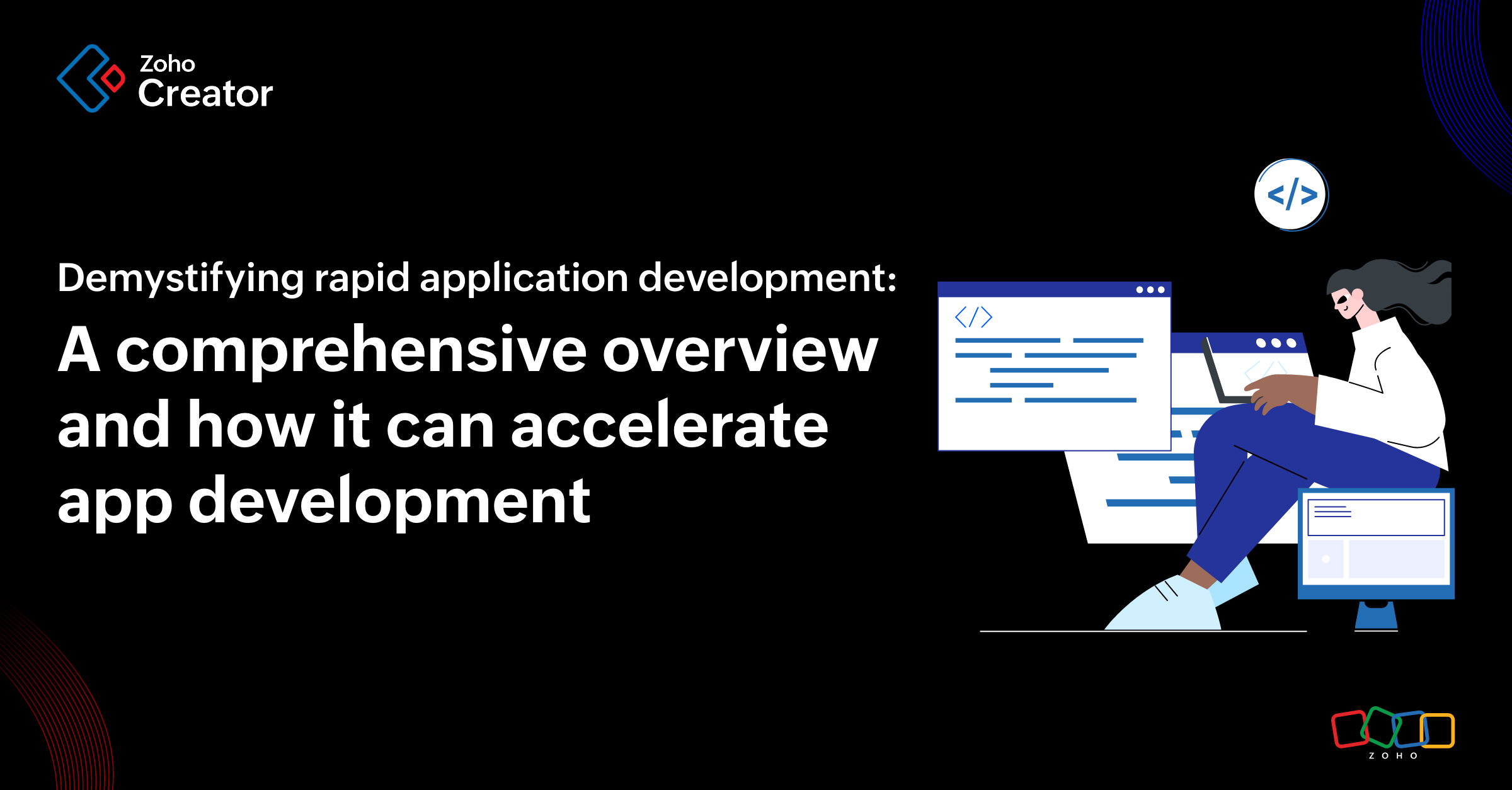- HOME
- Know Your Tech
- Stages of the agile software development life cycle
Stages of the agile software development life cycle
- Last Updated : April 20, 2023
- 2.2K Views
- 5 minutes Min Read
From a faster, collaborative development process to creating bandwidth for iterations on each development touchpoint—agile development ticks all the right boxes, and is the favored development approach for over 86% of software developers around the world.
From a strategic standpoint, businesses are able to amplify their digital footprint, capture vast audiences, and see a solid 60% hike in their revenue and profit growth—all by using agile development approaches.
And that’s exactly why businesses have shifted from traditional waterfall development to agile frameworks.
In this blog, we’re going to take a deep dive into how an agile software development lifecycle progresses, and how low-code platforms align perfectly with it.
While all agile development frameworks work on a set of principles defined in the Agile Manifesto, developers can adopt different approaches that best suit their interests. Developers select this framework by having extensive discussions between the team and other stakeholders involved in a particular project. The core considerations influencing this decision are awareness, comfort levels, and adaptability of the team to different frameworks.
As per a developer survey by Stack Overflow, Scrum tops the list of adopted frameworks, followed by Kanban and pair programming.
Scrum | 62.7% |
Kanban | 35.2% |
Pair Programming | 28.4% |
Extreme programming | 15.7% |
Waterfall | 15.1% |
Lean | 9.6% |
Now let’s look at how app development takes place in these agile frameworks.
Key agile software development lifecycle phases
On the surface, agile development might appear as a cycle of daily meetings, long feedback loops, and never-ending processes. But on the contrary, this approach paves the way for optimized operations, appropriate use of resources, and faster development. Developers can make room for iterations during the development cycle, rather than waiting till the end of the entire process.
Here are the stages that a typical agile app development process consists of:
Concept
The initial stage in the development cycle is mapping out the vision and outcomes that the enterprise expects from developing the application. From deciding the estimated development duration, resources, and manpower required, to judging the feasibility of the project, this stage governs the path for the rest of the development cycle. Clearly defining the objectives at this stage is crucial, because it forms the baseline to continuously check if the product being developed aligns with what the business needs.
Inception
This is the planning stage of the entire project. It starts with narrowing down the agile framework which will be used, and then moves on to outlining the features, functionalities, development flow, and other requirements expected from the app.
Once that’s locked down, the application is broken down into user stories. These are high-level requirement artifacts that define different things the user can do on the app. For example: “Users can place an order on the app” or “users can create a list of products they like.” These stories offer a better understanding of what needs to be built, and can be taken up in sprints, over the course of the development lifecycle.
This stage helps in getting a better understanding of the team’s bandwidth and what the end product is going to look like.
Development/construction
The next logical step in this lifecycle is to initiate the actual development process. Depending on the selected framework, the application is developed and changes are made on the basis of ongoing feedback loops.
Under the scrum framework, this development takes place in sprints—a defined number of weeks that consists of working on a set of user stories, reviewing the work done, and collecting feedback. It also includes daily standup meetings to give an overview of the progress at any stage of development.
Meanwhile in another popular framework, Kanban, task workflows are visualized on a Kanban board, which enables all stakeholders involved to track and evaluate all tasks in the pipeline.
The goal of this stage is to produce a minimum viable product (MVP) which is further subjected to revisions, testing, and feedback from the team. This might not be the final product that is rolled out for use, but it gives the essence of what it has to offer.
Integration and testing
Before reaching this stage, the application in question has already gone through a series of iterations and an MVP is rolled out, pushing the application into production.
Under this stage, the application goes through quality assurance (QA) where any possible bugs, defects or discrepancies are identified and removed from the application. Depending on the nature of these changes, this stage might involve extensive development and testing again, which is initially accounted for in the planning stage.
Implementation/deployment
Once the application is tested, it’s ready to be deployed on the servers and rolled out for customers. Developers can either roll out a beta version of the app, or the final version, if they’re feeling confident.
At this stage, the application is also monitored closely to remove bugs, update functionality, introduce new features, and more. These changes are introduced depending on the interests and requirements of the end users. And if a major change has to be introduced, it might result in initiating a new development cycle. But the important thing to remember is that the goal remains to enhance the end user experience.
Review/retirement
Under the final stage of the agile development lifecycle, the application is finally retired when a newer release is rolled out, or an older version is simply no longer supported. Most times, applications go through minor updates and changes but they are pulled out of production cycles mostly when they are no longer cost-effective or serve the intended purpose.
Agile software development and low-code platforms
Low-code platforms are simplifying application development for enterprises by enabling them to develop applications quickly, and at lower costs. Application development using low-code platforms aligns with agile methodologies in multiple ways:
The ease of development on low-code platforms makes it easier for teams to estimate the time and effort required for different user stories, and for the overall development process. Accurate estimates make the application development lifecycle better adhere to agile methodologies.
Low-code platforms allow developers and business stakeholders to collaborate closely in terms of defining applications, developing them, or sharing feedback. This makes the sprint more streamlined because feedback and iteration loops are faster.
Most low-code platforms offer ready-to-use code snippets which can be used while developing applications, thus the chance for errors and bugs are reduced and a major part of quality assurance is taken care of. Code standardization, API integrations, security features, and more, on low-code platforms are developed according to industry best practices, and hence reduce the chance for error.
Agile methodologies are already well embedded in most organizations. Continuing with that practice while adopting a low-code platform is an excellent way to accelerate their digital transformation. From shorter app development cycles and increasing overall developer productivity, to offering robust applications to customers, low-code is one of the best ways to build a strong presence in the current digital economy.
 Divesh Sood
Divesh SoodDiv can usually be found reading a book, and that book will more likely than not be a psychological thriller. He always enjoys creating content - be it a poster, video or a blog. When not absorbed in the latest gripping page-turner, Divesh loves cooking, sings very badly, enjoys spending his time petting cats, and otherwise spends far too much time at the computer. He lives in India, with his 5 cats and 1 dog.



